Digital Poster
Next Frontiers in Breast MRI
ISMRM & ISMRT Annual Meeting & Exhibition • 10-15 May 2025 • Honolulu, Hawai'i

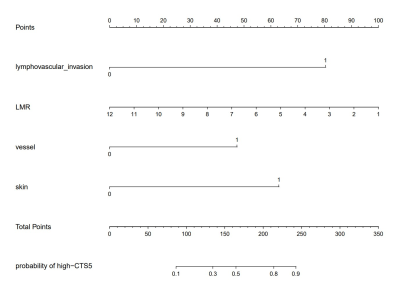 |
Computer Number: 17
2118. Nomogram
Based on Breast MRI for Predicting Treatment Decisions in
HR-Positive Breast Cancer
m. Sheng, l. zhang
the Affiliated 2 Hospital of Nantong University, Nantong, China
Impact: This MRI-based nomogram enables personalized
treatment for HR-positive breast cancer , thus offering a
non-invasive, cost-effective approach for recurrence risk
stratification and extended endocrine therapy decisions.
|
|
 |
Computer Number: 18
2119. Earlier
response monitoring strategy of breast cancer with longitudinal
multiparametric MRI follow neoadjuvant chemotherapy
Y. Li, J. Guo, Y. Xue, L. Xie, H. Lu
Tianjin Medical University Cancer Institute and Hospital, Tianjin, China
Impact: This study is highly impactful, as it
demonstrates that MRI biomarkers can dynamically predict the
response to NAC, with the combination of kinetic and
diffusion parameters enabling early prediction of treatment
response.
|
|
 |
Computer Number: 19
2120. Super
Voxel Clustering for DCE-MRI Pharmacokinetic Analysis and the
Effect on Prediction of Breast Cancer Therapy Response
B. Moloney, A. Tudorica, D. Biswas, A. Kazerouni, J. Holmes,
S. Partridge, W. Huang, X. Li
Oregon Health & Science University, Portland, United States
Impact:
Use of SVs to stabilize advanced DCE-MRI PK models may potentially improve accuracy of estimated Ktrans and its predictive performance for BC response to NAC. |
|
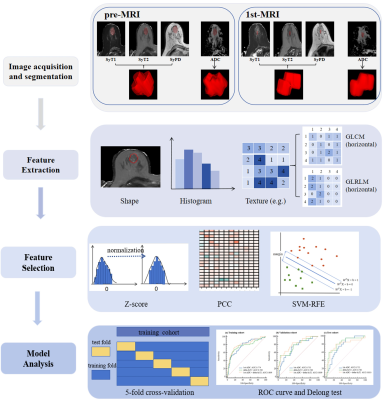 |
Computer Number: 20
2121. Radiomics
analysis of contrast-free synthetic MRI and ADC for early
predicting neoadjuvant chemotherapy response in breast cancer
Y. Zhang, S. Du, L. Xie, L. Zhang
The Fourth Affiliated Hospital of China Medical University, Shenyang, China
Impact: Multiparametric SyMRI and ADC, as noncontrast
sequences, have the potential to early predict NAC response
in radiomics analysis, thus reducing the need for repeated
contrast agent injections during treatment.
|
|
 |
Computer Number: 21
2122. Accelerated
High-Resolution T1- and T2-weighted Breast MRI with Deep
Learning Super-Resolution Reconstruction
N. Mesropyan, C. Katemann, A. Isaak, O. Weber, J. Peeters,
A. Lakghomi, J. Luetkens
University Hospital Bonn , Bonn, Germany
Impact: Deep learning reconstruction algorithm for
denoising with compressed sensing and resolution upscaling
reduces acquisition time and improves image quality for
dynamic contrast-enhanced T1w and T2w breast MRI.
|
|
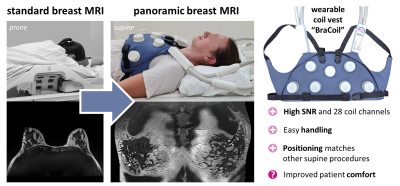 |
Computer Number: 22
2123. Patient
comfort in supine breast MRI using a wearable RF coil —
preliminary analysis of questionnaires developed in a Citizen
Science project
L. Nohava, E. Laistler, R. Frass-Kriegl
High Field MR Center, Center for Medical Physics and Biomedical Engineering, Medical University of Vienna, Vienna, Austria
Impact: The study supports a patient-centered, supine
breast MRI approach, enhancing comfort, especially for
individuals facing physical constraints. This has potential
implications for broader patient inclusion and improved
compliance in breast cancer diagnostics.
|
|
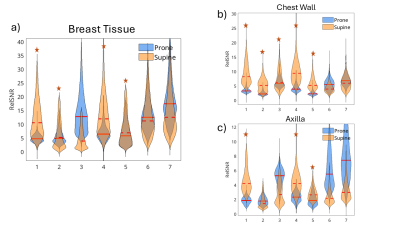 |
Computer Number: 23
2124. Relative
SNR Measurement with Supine versus Prone Positioning in Breast
MRI
J. Hess, C. Moran, P. Shah, J. Vincent, F. Robb, B. Daniel,
B. Hargreaves
Stanford University, Stanford, United States
Impact: Breast MRI has emerged as a key component to
breast cancer imaging. However, the prone setup is
uncomfortable for many patients. Being able to scan in
supine with potential SNR benefits would allow for a robust
supine breast MRI protocol.
|
|
 |
Computer Number: 24
2125. Automated
assessment of background parenchymal enhancement on breast MRI:
Impact on breast cancer risk in a matched cohort study
H. Yoen, S. Kim, S-O Kim, S. M. Ha
Seoul National University Hospital, Seoul, Korea, Republic of
Impact: With more robust measurement, BPE alongside with
clinical risk factors and breast density could enhance
breast cancer risk assessment. This could help optimize
breast screening strategy through a multimodal approach.
|
|
 |
Computer Number: 25
2126. Cluster
analysis of quantitative ultrafast DCE-MRI for DCIS grading and
upgrading without tracing lesion region-of-interest
Z. Ren, X. Fan, H. Shim, H. Abe, K. Kulkarni, G. Karczmar
University of Chicago, Chicago, United States
Impact: K-means clustering analysis of ultrafast DCE-MRI
can help identify DCIS, differentiate between low- and
high-grade DCIS and identify invasive potential, and
facilitate personalized treatment by guiding decisions on
aggressive treatment versus surveillance for breast cancer
patients.
|
|
 |
Computer Number: 26
2127. Ultra-low
field (6.5 mT) Magnetic Resonance Breast Imaging : A Pilot Study
S. Shen, N. Koonjoo, S. Ogier, M. Saksena, L. Lamb, J.
Camacho, K. Keenan, M. Rosen
Massachusetts General Hospital, Charlestown, United States
Impact: This preliminary work demonstrates that ULF
magnetic breast imaging is feasible and may be a viable
option for breast cancer diagnosis and screening.
|
|
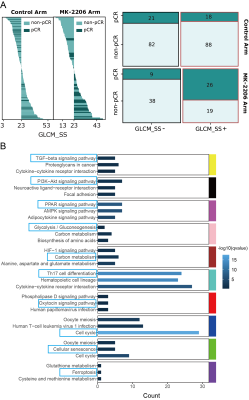 |
Computer Number: 27
2128. Advancing
Radiogenomics: MRI-Guided Identification of Novel Breast Cancer
Molecular Subtypes
Q. LAI, X. TENG, X. ZHANG, J. ZHANG, T. LI, J. CAI, G. REN
The Hong Kong Polytechnic University, HongKong, China
Impact: This study advances radiogenomics by
demonstrating functional MRI-guided identification of new
breast cancer subtypes, highlighting its potential in
clinical applications.
|
|
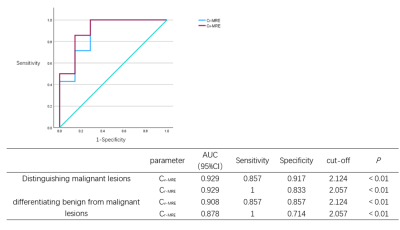 |
Computer Number: 28
2129. Diagnostic
Value of IVIM-Based Virtual MR Elastography Compared with Real
MR Elastography in Breast Lesions
N. Zhou, J. Li, M. Chen, Y. Zhou, Y. Wang, Z. Han, W. Wang,
Y. Jiang
Medical imaging department,First Affiliated Hospital of Kunming Medical University, Kunming, China
Impact: IVIM-based vMRE shows potential as a
non-invasive alternative to rMRE for breast lesion
diagnosis, offering broader applicability in patient care by
enhancing diagnostic accessibility, especially for cases
unsuited to traditional rMRE.
|
|
 |
Computer Number: 29
2130. Comparative
Analysis of Image Quality in Breast DWI at 3.0T: DL- RESOLVE vs.
Standard RESOLVE
Z. Laraib, M. Tsarouchi, Z. Cevval, M. Maas, E. Weiland, G.
Thoermer, R. Mann
Radboudumc, Nijmegen, Netherlands
Impact: DL-RESOLVE leverages advanced deep learning
techniques to provide contrast-free breast MRI with better
image quality, reduced artifacts, and shorter acquisition
time. This innovative approach enhances diagnostic accuracy
and efficiency, making it a promising tool for clinical
breast imaging.
|
|
 |
Computer Number: 30
2131. Optimizing
DCE-MRI Interpretation to Improve Tumor Extent Assessment and
Margin Negativity in Breast-Conserving Surgery for Lobular
Carcinoma
N. Cho, H. Yoen
Seoul National University Hospital, Seoul, Korea, Republic of
Impact: Incorporating both mass and non-mass
enhancements in the delayed phase of DCE-MRI could improve
preoperative assessment accuracy for lobular carcinoma,
helping surgeons achieve negative resection margins and
potentially reducing reoperation rates in breast-conserving
surgery.
|
|
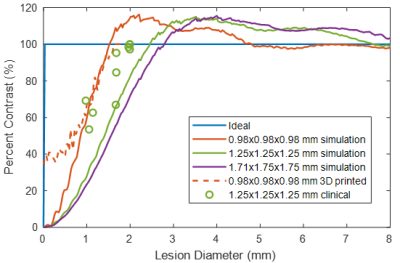 |
Computer Number: 31
2132. Quantifying
Ultrafast MR Contrast as a Function of Lesion Size: Silico
Simulation, 3D Printed Phantom, and Clinical MR Images
Z. Long, E. Macdonald, S. Robertson
Duke University, Durham, United States
Impact: This study aims to enhance ultrafast breast MRI
by demonstrating the diagnostic value of employing isotropic
spatial resolution to minimize contrast loss from partial
volume effects, potentially allowing better diagnosis of
small and early-enhancing lesions, ultimately reducing
unnecessary biopsies.
|
|
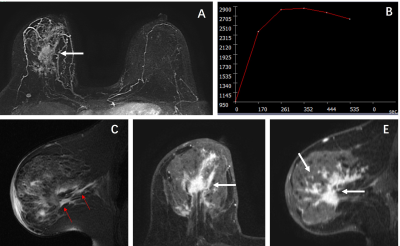 |
Computer Number: 32
2133. Classification
of HER2-zero and HER2-low and Prediction of Progression in
Triple Negative Breast Cancer Using MRI Features
J. Zhou, Y. Zhang, Y-L Liu, J-H Chen, M. Wang, M-Y Su
The First Affiliated Hospital of Wenzhou Medical University, Wenzhou, China
Impact: TNBC had negative ER, PR, and HER2, which was
defined as immunohistochemical staining 0, 1+, or 2+ with
negative FISH, but currently, HER2-low may receive anti-HER2
drug conjugates. Finding imaging biomarkers may help in
precision treatment and understanding progression risk.
|
The International Society for Magnetic Resonance in Medicine is accredited by the Accreditation Council for Continuing Medical Education to provide continuing medical education for physicians.